Effects of Vehicular Speed on the Assessment of Pavement Road Roughness
Abstract
:Featured Application
Abstract
1. Introduction
2. Materials and Methods
2.1. International Roughness Index (IRI)—ASTM E 1926
2.2. Road Surface Profiles Classification—ISO 8608
2.3. Whole-Body Vibration—ISO 2631
3. Results and Discussions
3.1. Road Pavements Evaluation Methods Comparison
3.2. Analysis of Speed Influence
- 50–60 km/h along class C sections;
- 40–50 km/h along class D sections (speed lower than along sections belonging to class C).
3.3. Estimation of Road Users Running Speed
- ▪
- Fairly uncomfortable or better (awz < 1 m/s2);
- ▪
- Little uncomfortable or better (awz < 0.63 m/s2)
4. Conclusions and Future Developments
Author Contributions
Funding
Conflicts of Interest
References
- Sayers, M.W. On the calculation of international roughness index from longitudinal road profile. In Transportation Research Record 1501; TRB, National Research Council: Washington, DC, USA, 1995; pp. 1–12. [Google Scholar]
- Karamihas, S.M.; Sayers, M.W. The Little Book of Profiling; Transportation Research Institute, University of Michigan: Ann Arbor, MI, USA, 1998. [Google Scholar]
- Kropáč, O.; Múčka, P. Be careful when using the International Roughness Index as an indicator of road unevenness. J. Sound Vib. 2005, 287, 989–1003. [Google Scholar] [CrossRef]
- Kropáč, O.; Múčka, P. Indicators of longitudinal road unevenness and their mutual relationship. Road Mater. Pavement Des. 2007, 8, 523–549. [Google Scholar] [CrossRef]
- ISO. Mechanical Vibration–Road Surface Profiles–Reporting of Measured Data; ISO 8608, ISO/TC108/SC2, Geneve, Switzerland: Multiple; Distributed through American National Standards Institute (ANSI): Washington, DC, USA, 1995. [Google Scholar]
- Verros, G.; Natsiavas, S.; Papadimitriou, C. Design optimization of quarter-car models with passive and semi-active suspensions under random road excitation. J. Vib. Control 2005, 11, 581–606. [Google Scholar] [CrossRef]
- Rouillard, V.; Sek, M.A.; Bruscella, B. Simulation of road surface profiles. J. Transp. Eng. 2001, 127, 247–253. [Google Scholar] [CrossRef]
- Loprencipe, G.; Cantisani, G. Unified analysis of road pavement profiles for evaluation of surface characteristics. Mod. Appl. Sci. 2013, 7, 1. [Google Scholar] [CrossRef]
- Feng, T.; Yu-Fen, H.; Shun-Hsu, T.; Wes, S.J. Generation of Random Road Profiles; CSME: B04-001: 1373–1377; 2006 Taiwan. Available online: http://citeseerx.ist.psu.edu/viewdoc/download?doi=10.1.1.474.1875&rep=rep1&type=pdf (accessed on 20 April 2019).
- Agostinacchio, M.; Ciampa, D.; Olita, S. The vibrations induced by surface irregularities in road pavements—A Matlab approach. In European Transport Research Review; Springer: Berlin/Heidelberg, Germany, 2013. [Google Scholar]
- Loprencipe, G.; Zoccali, P. Use of Generated Artificial Road Profiles in Road Roughness Evaluation. J. Mod. Transp. 2017, 25, 24–33. [Google Scholar] [CrossRef]
- McGetrick, P.J.; Kim, C.W.; González, A.; O’Brien, E.J. Dynamic Axle Force and Road Profile Identification using a Moving Vehicle. Int. J. Archit. 2013, 2, 1–16. [Google Scholar] [CrossRef]
- González, A.; O’Brien, E.J.; Li, Y.-Y.; Cashell, K. The use of vehicle acceleration measurements to estimate road roughness. Veh. Syst. Dyn. 2008, 46, 483–499. [Google Scholar] [CrossRef] [Green Version]
- Loizos, A.; Plati, C. An alternative approach to pavement roughness evaluation. Int. J. Pavement Eng. 2008, 9, 69–78. [Google Scholar] [CrossRef]
- Yu, J.; Chou, E.Y.J.; Yau, J.T. Development of speed-related ride quality thresholds using international roughness index. In Proceedings of the Transportation Research Board Annual Meeting, Washington, DC, USA, 22–26 January 2006. Paper No. 06-1820. [Google Scholar]
- Ahlin, K.; Granlund, J. Relating road roughness and vehicle speeds to human whole body vibration and exposure limits. Int. J. Pavement Eng. 2002, 3, 207–216. [Google Scholar] [CrossRef]
- Cantisani, G.; Loprencipe, G. Road roughness and whole body vibration: Evaluation tools and comfort limits. J. Transp. Eng. 2010, 136, 818–826. [Google Scholar] [CrossRef]
- ISO. Mechanical Vibration and Shock-Evaluation of Human Exposure to Whole-Body Vibration–Part 1: General Requirements; ISO 2631-1, ISO/TC108/SC4, Geneve, Switzerland: Multiple; Distributed through American National Standards Institute (ANSI): Washington, DC, USA, 1997. [Google Scholar]
- EN. Surface Characteristics of Road and Airfield Pavements–Test Methods—Part 5: Determination of Longitudinal Unevenness Indices; prEN 13036-5; European Committee for Standardization: Brussels, Belgium, 2006. [Google Scholar]
- ASTM. Standard Practice for Computing International Roughness Index of Roads from Longitudinal Profile Measurement; ASTM E1926; ASTM: West Conshohocken, PA, USA, 2008. [Google Scholar]
- Kropáč, O.; Múčka, P. Effects of longitudinal road waviness on vehicle vibration response. Veh. Syst. Dyn. 2009, 47, 135–153. [Google Scholar] [CrossRef]
- Andrén, P. Power spectral density approximations of longitudinal road profiles. Int. J. Veh. Des. 2006, 40, 2–14. [Google Scholar] [CrossRef]
- Múčka, P.; Granlund, J. Is the road quality still better? J. Transp. Eng. 2012, 138, 1520–1529. [Google Scholar] [CrossRef]
- Cantisani, G.; Loprencipe, G. Discomfort Degli Utenti Stradali in Area Urbana in Presenza di Irregolarità Stradali Diffuse e Puntuali; Strade e Autostrade, EDI-CEM srl: Milano, Italy, 2005; Volume IX-N, p. 53. (In Italian) [Google Scholar]
- Cantisani, G.; Loprencipe, G. Irregolarità Stradali in Campo Urbano: Procedure per la Valutazione del Comfort di Marcia; Strade e Autostrade, EDI-CEM srl: Milano, Italy, 2005; Volume IX-N, p. 52. (In Italian) [Google Scholar]
- Bonin, G.; Cantisani, G.; Loprencipe, G.; Sbrolli, M. Ride quality evaluation: 8 d.o.f. vehicle model calibration. In Proceedings of the III S.I.I.V. International Congress, Grafill S.r.l., Palermo, Italy, 12–14 September 2007. [Google Scholar]
- Múčka, P. Correlation among Road Unevenness Indicators and Vehicle Vibration Response. J. Transp. Eng. 2013, 139, 771–786. [Google Scholar] [CrossRef]
- Múčka, P. International roughness index specifications around the world. Road Mater. Pavement Des. 2017, 18, 929–965. [Google Scholar] [CrossRef]
- Loprencipe, G.; Cantisani, G.; Di Mascio, P. Global assessment method of road distresses. Life-Cycle of Structural Systems: Design, Assessment, Maintenance and Management. In Proceedings of the 4th International Symposium on Life-Cycle Civil Engineering (IALCCE) 2014, Tokyo, Japan, 16–19 November 2014; pp. 1113–1120. [Google Scholar]
- Bonin, G.; Polizzotti, S.; Loprencipe, G.; Folino, N.; Rossi, C.O.; Teltayev, B.B. Development of a road asset management system in Kazakhstan. In Proceedings of the AIIT International Congress on Transport Infrastructure and Systems (TIS), Rome, Italy, 10–12 April 2017; pp. 537–545. [Google Scholar]
- Pantuso, A.; Loprencipe, G.; Bonin, G.; Teltayev, B.B. Analysis of Pavement Condition Survey Data for Effective Implementation of a Network Level Pavement Management Program for Kazakhstan. Sustainability 2019, 11, 901. [Google Scholar] [CrossRef]
- Loprencipe, G.; Pantuso, A.; Di Mascio, P. Sustainable pavement management system in urban areas considering the vehicle operating costs. Sustainability 2017, 9, 453. [Google Scholar] [CrossRef]
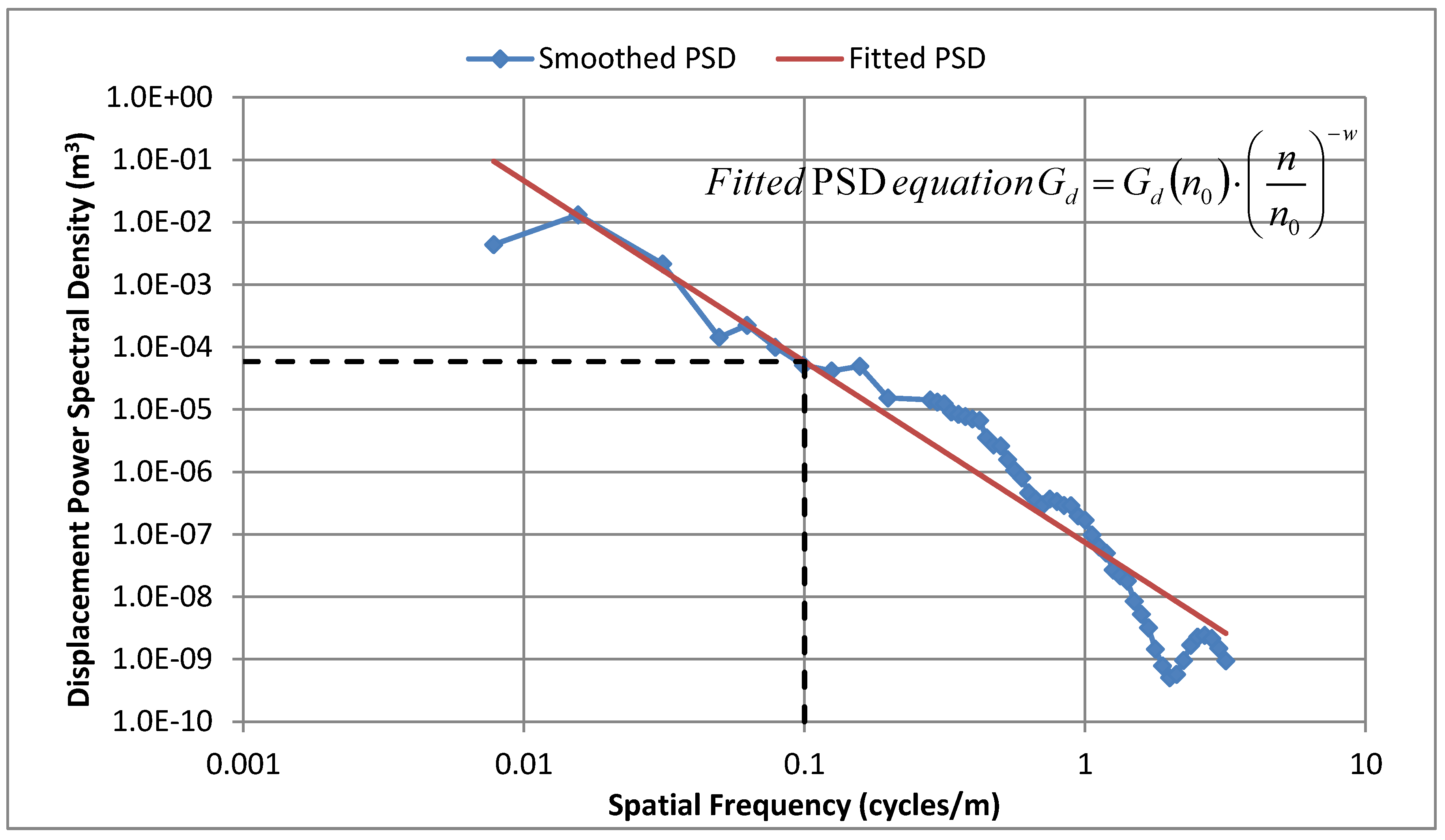
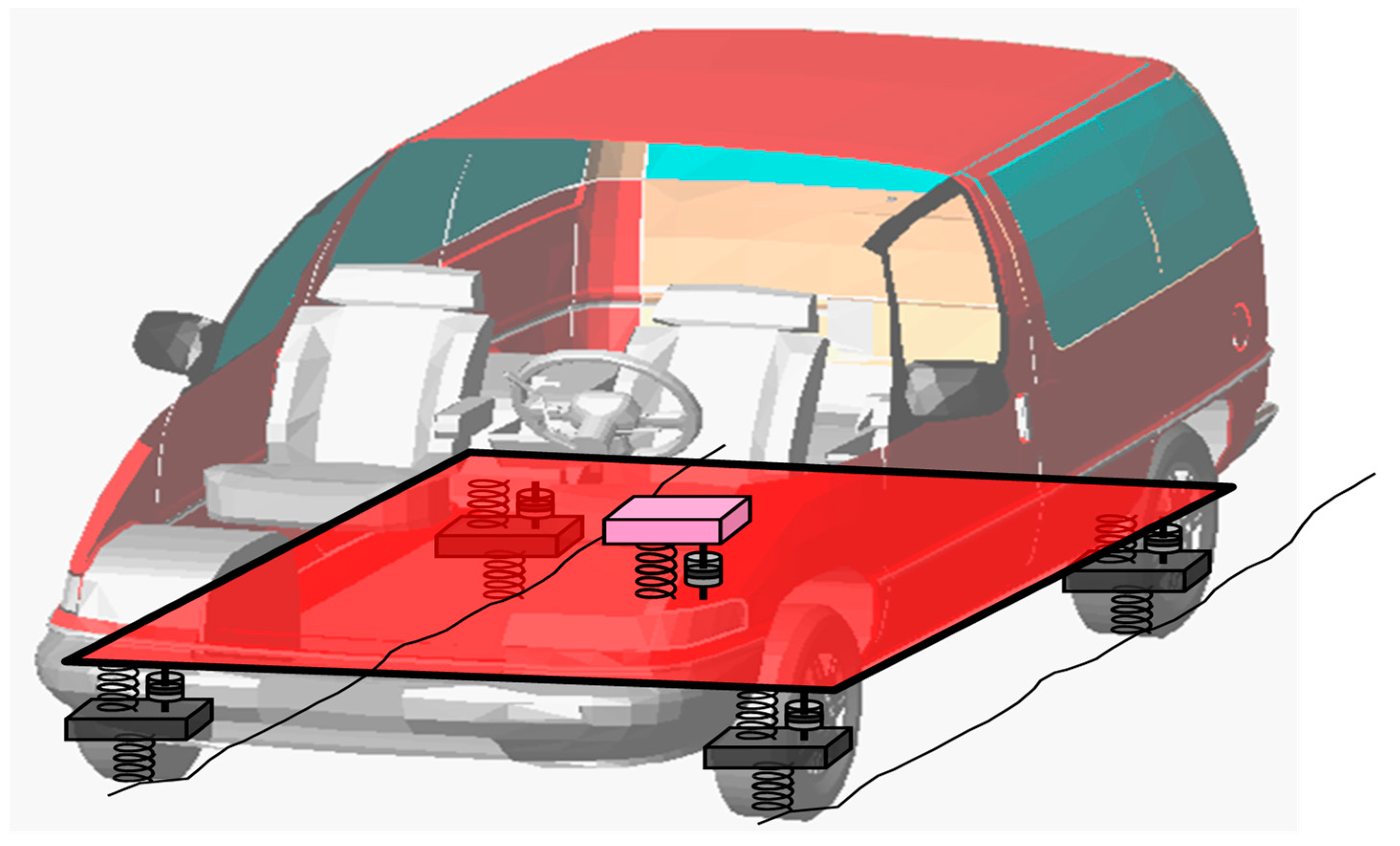
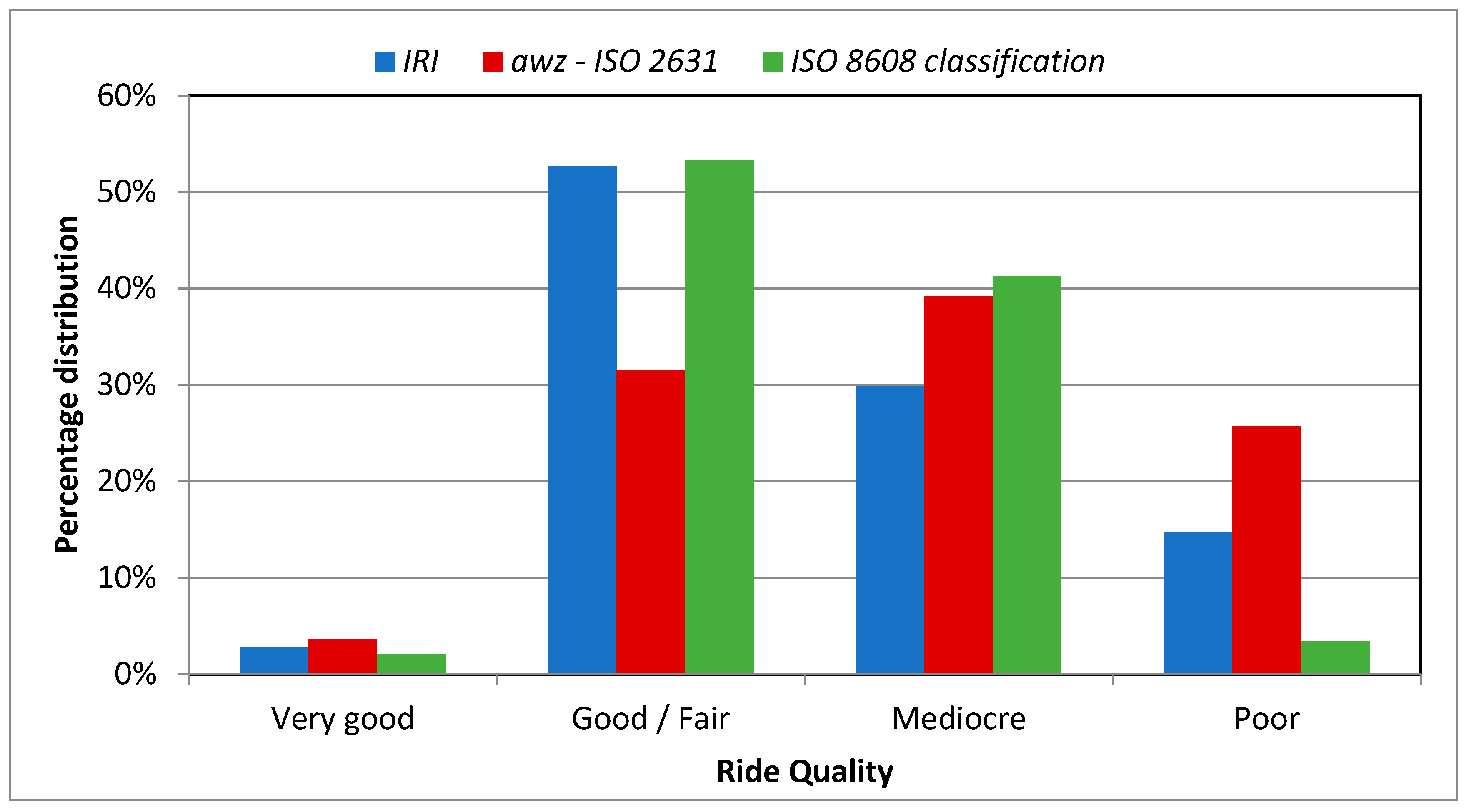
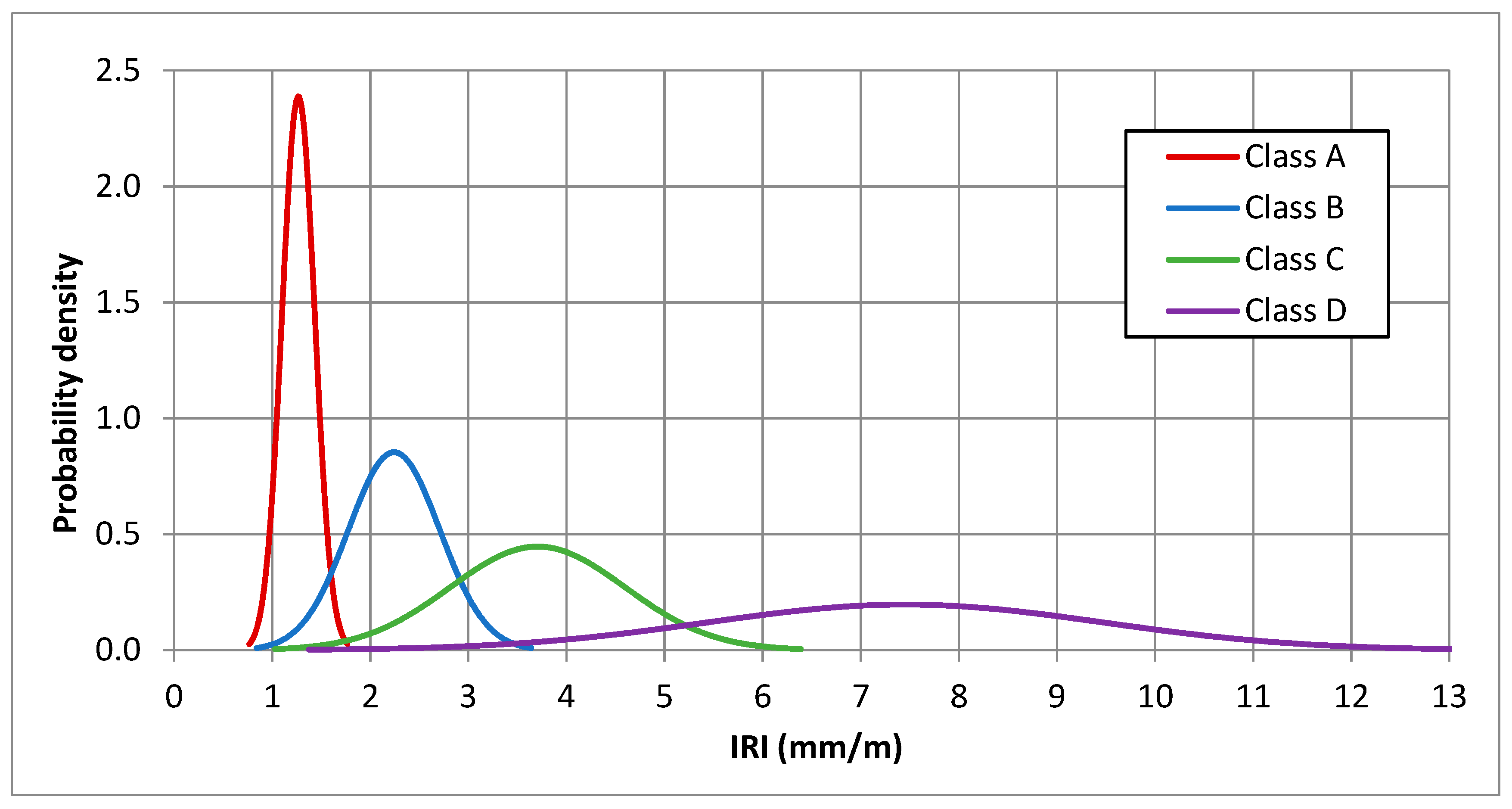
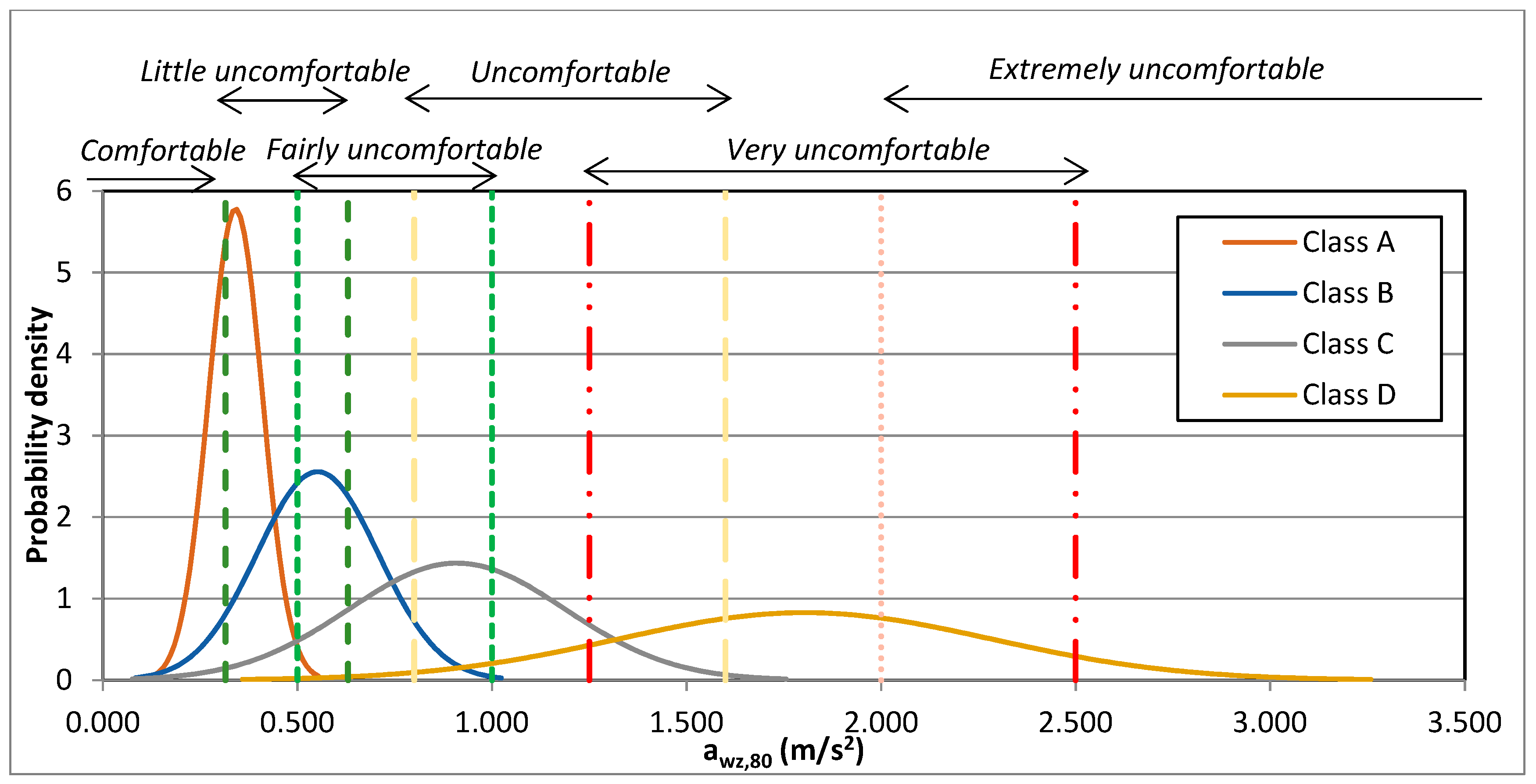
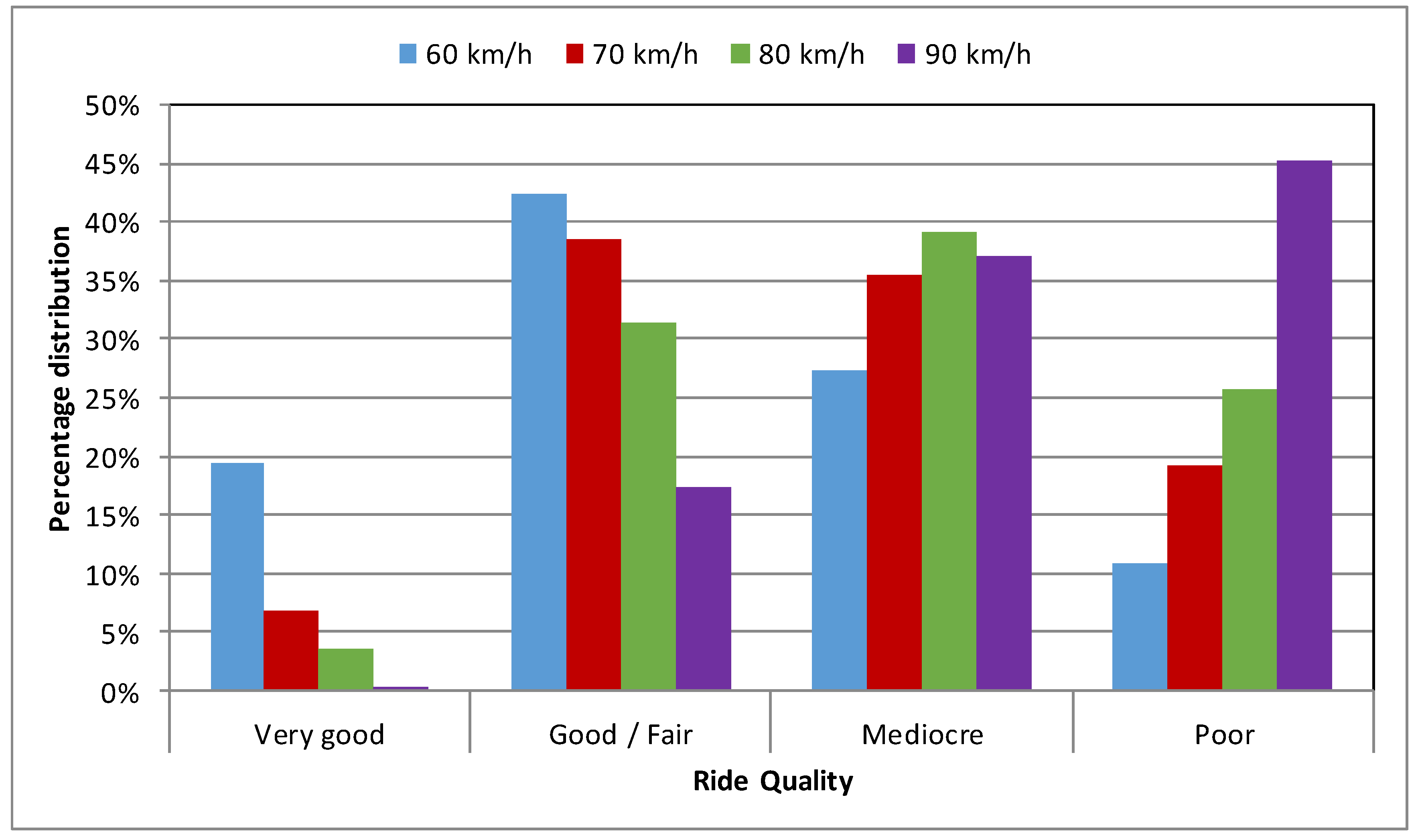
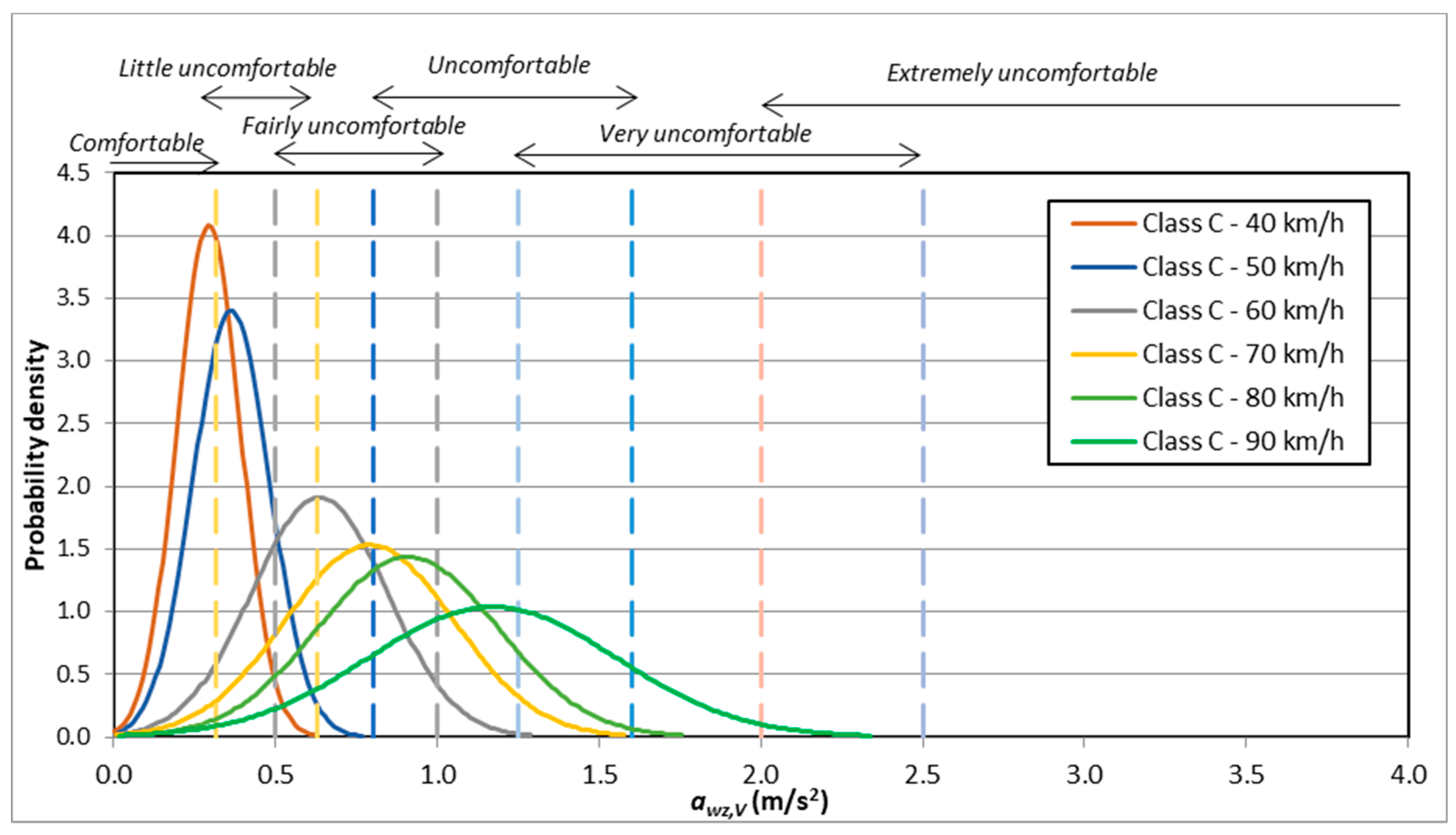
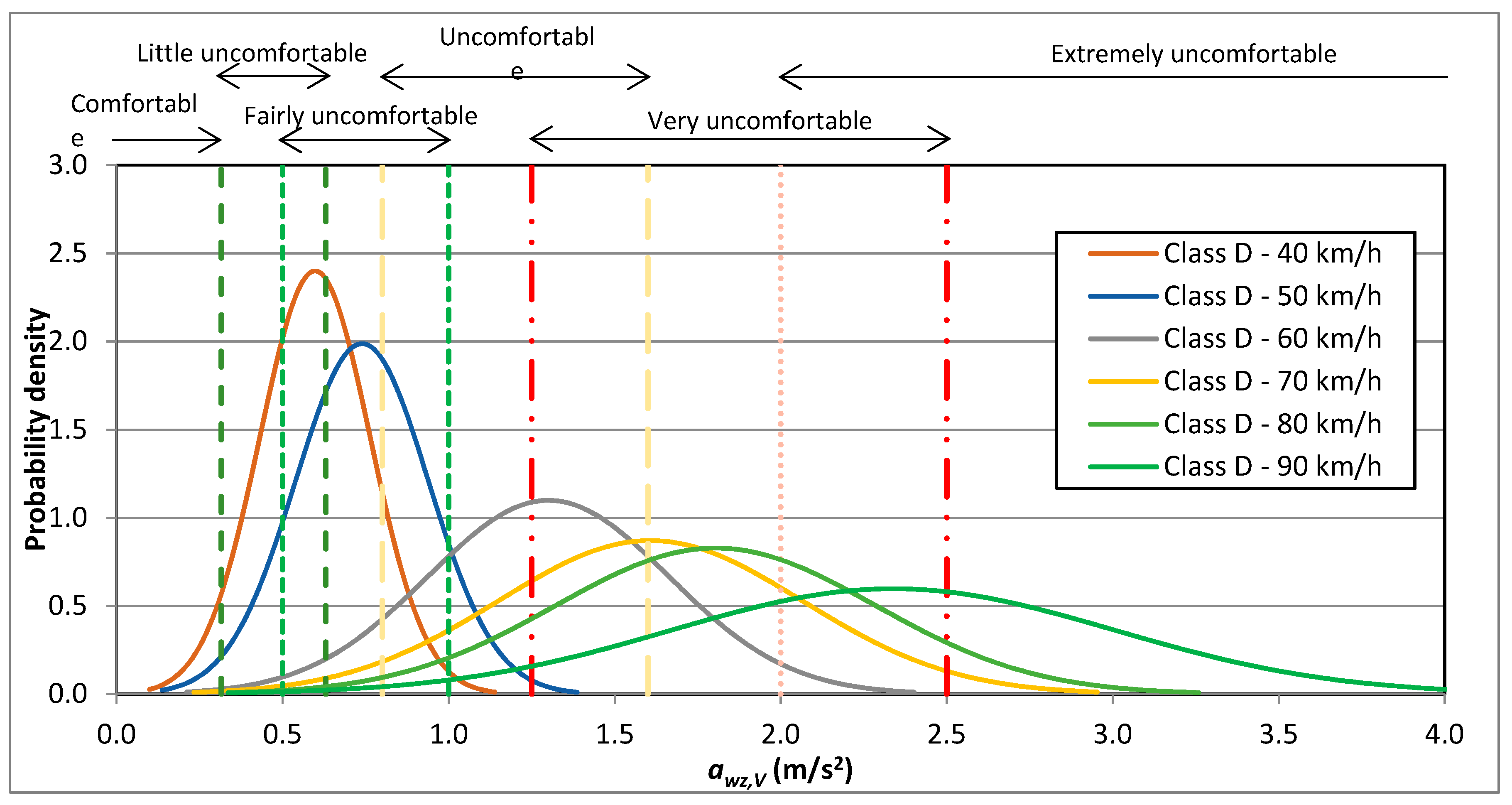
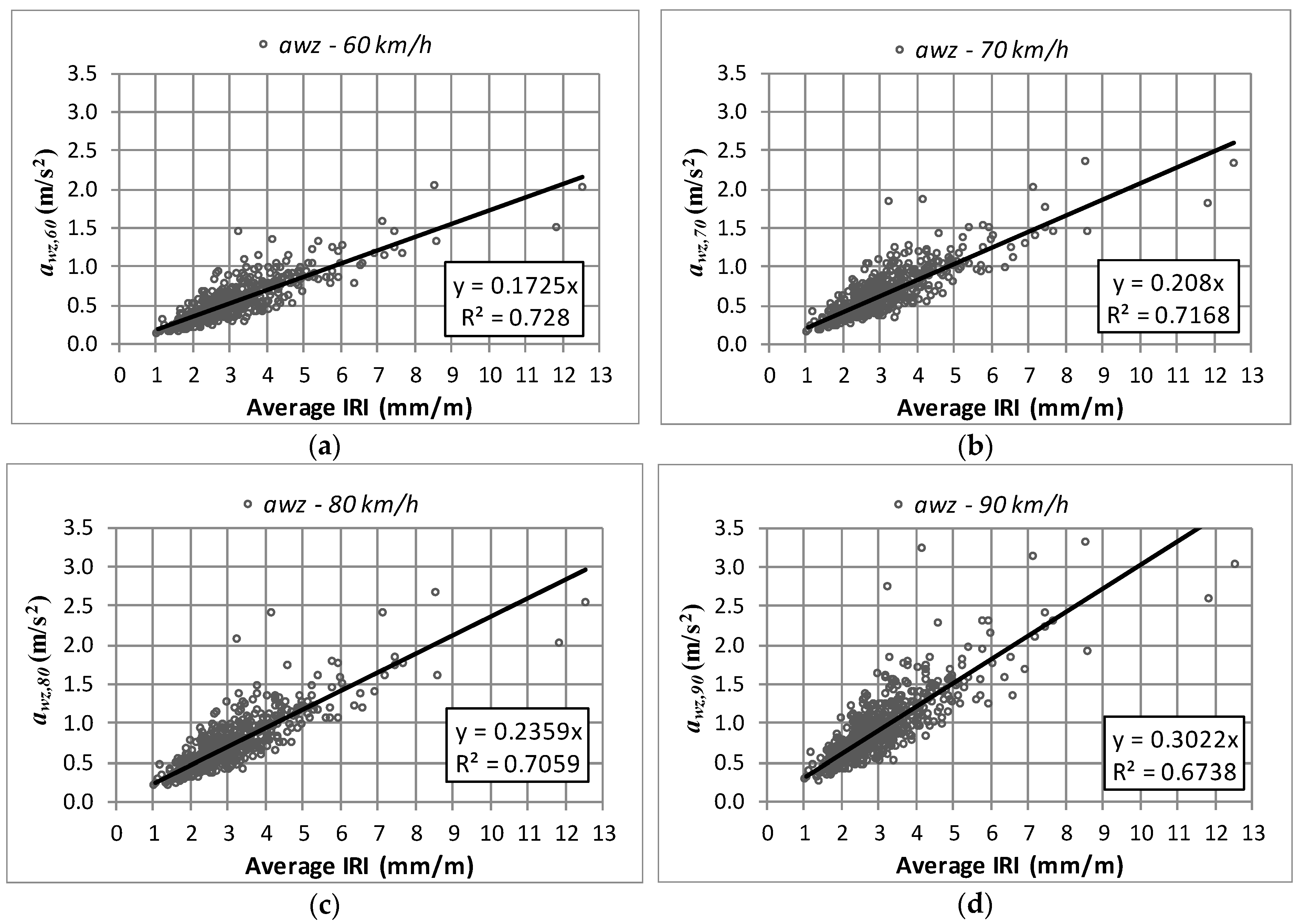
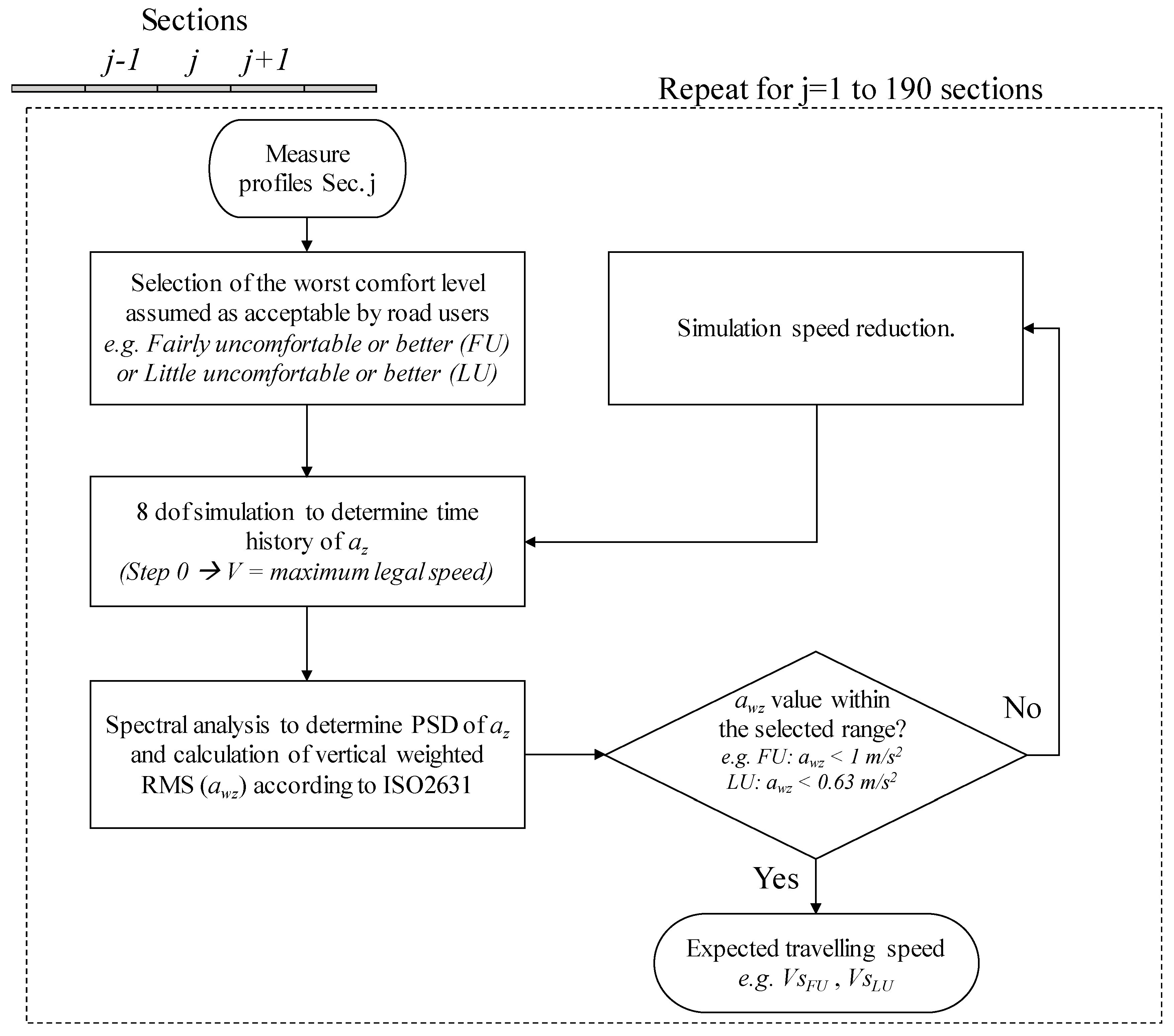
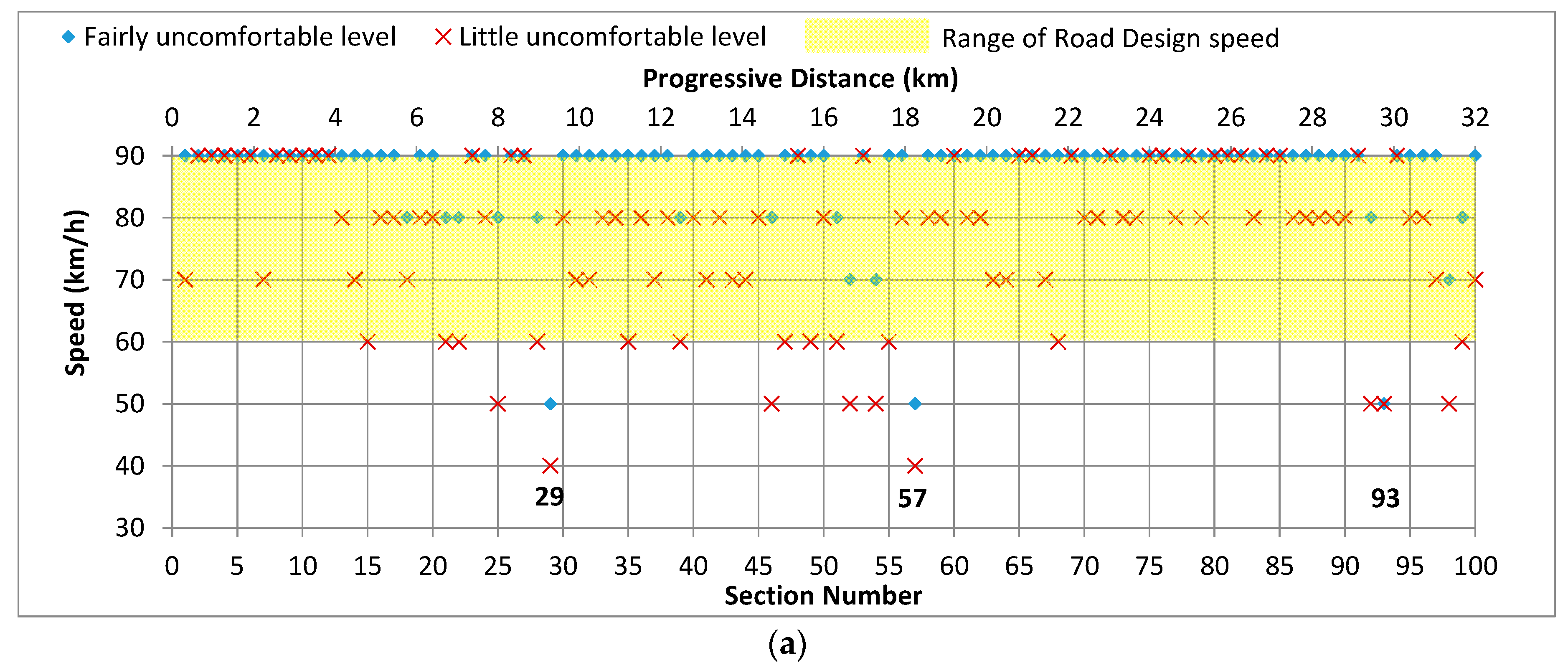
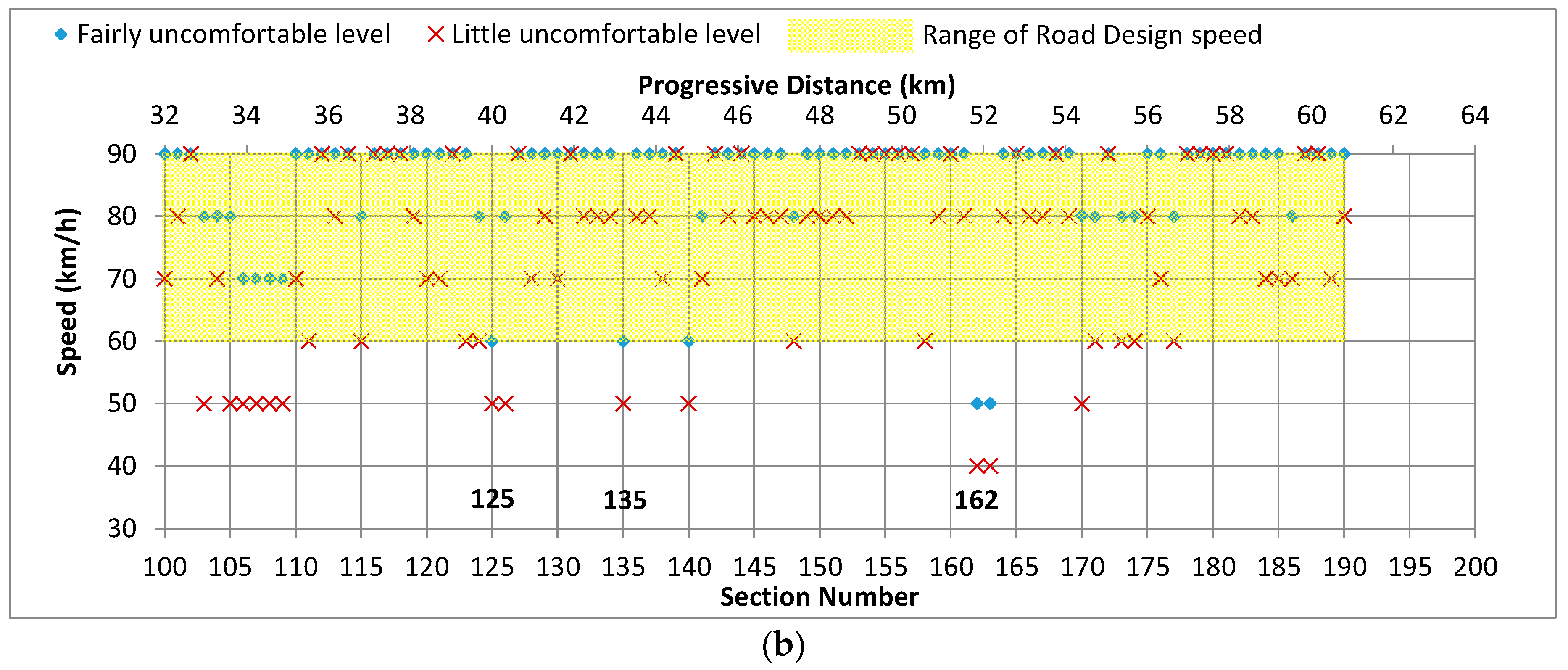
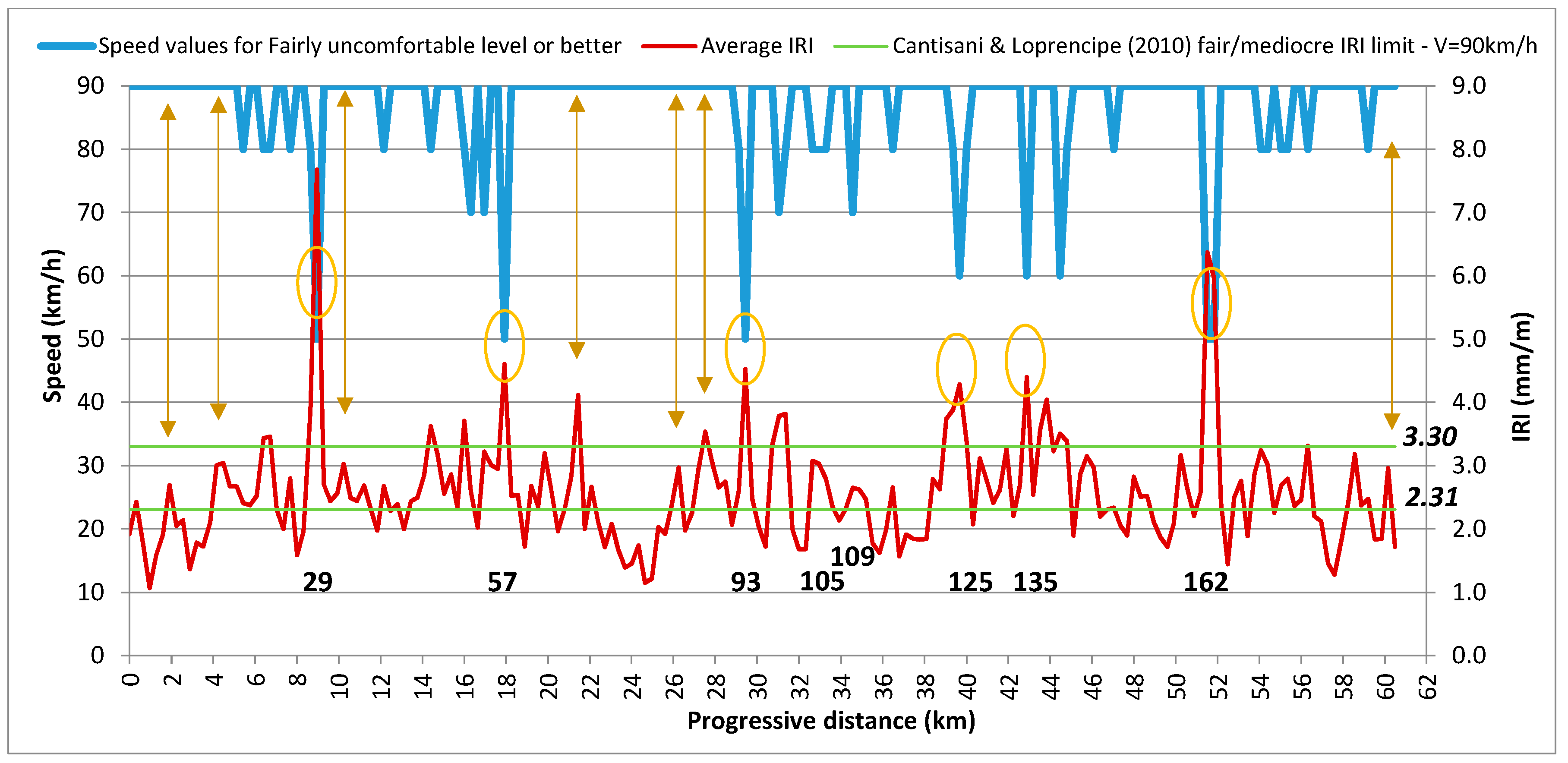
| Road | Total Length (km) | Number of Sections (320 m Length) |
|---|---|---|
| 01 | 28.8 | 90 |
| 02 | 42.8 | 134 |
| 03 | 66.2 | 207 |
| 04 | 60.8 | 190 |
| Total | 198.6 | 621 |
| awz Values | Comfort Level |
|---|---|
| less than 0.315 m/s2 | not uncomfortable |
| 0.315–0.63 m/s2 | a little uncomfortable |
| 0.5–1 m/s2 | fairly uncomfortable |
| 0.8–1.6 m/s2 | uncomfortable |
| 1.25–2.5 m/s2 | very uncomfortable |
| greater than 2 m/s2 | extremely uncomfortable |
| Ride Quality | IRI Thresholds (80 km/h) [15,17] | ISO 2631 Comfort Levels [18] | awz Thresholds (m/s2) | ISO 8608 Class [5] | Gd (n0) (10−6 m3) |
|---|---|---|---|---|---|
| Very good | <1.43 | Comfortable | <0.315 | A | <32 |
| Good/Fair | 1.43–2.84 | Little comfortable | 0.315–0.565 | B | 32–128 |
| Mediocre | 2.84–4.05 | Fairly uncomfortable | 0.565–0.90 | C | 128–512 |
| Poor | >4.05 | Uncomfortable (Very and Extremely) | >0.90 | D | 512–2048 |
| Slope–V = 60 km/h | Slope–V = 70 km/h | Slope–V = 80 km/h | Slope–V = 90 km/h | |
|---|---|---|---|---|
| Cantisani & Loprencipe [17] | 0.169 | 0.200 | 0.220 | 0.270 |
| Present work | 0.172 | 0.208 | 0.235 | 0.302 |
| Section Number | IRI (mm/m) | Max Speed for Fairly Uncomfortable Level (km/h) | Max Speed for Little Uncomfortable Level (km/h) |
|---|---|---|---|
| 29 | 7.67 | 50 | 40 |
| 57 | 4.60 | 50 | 40 |
| 93 | 4.53 | 50 | 50 |
| 125 | 4.28 | 60 | 50 |
| 135 | 4.39 | 60 | 50 |
| 162 | 6.36 | 50 | 40 |
| Method | Usable in All Road Categories | Thresholds Independent by Speed | Calculation Not Influenced by Profile or Section Length | Consolidated Index for Pavement Management | Computational Ease | Comfort Assessment |
|---|---|---|---|---|---|---|
| ISO 8608 | ** | * | ** | ** | ** | * |
| IRI | * | * | * | *** | *** | ** |
| ISO 2631 | *** | *** | *** | * | * | *** |
© 2019 by the authors. Licensee MDPI, Basel, Switzerland. This article is an open access article distributed under the terms and conditions of the Creative Commons Attribution (CC BY) license (http://creativecommons.org/licenses/by/4.0/).
Share and Cite
Loprencipe, G.; Zoccali, P.; Cantisani, G. Effects of Vehicular Speed on the Assessment of Pavement Road Roughness. Appl. Sci. 2019, 9, 1783. https://doi.org/10.3390/app9091783
Loprencipe G, Zoccali P, Cantisani G. Effects of Vehicular Speed on the Assessment of Pavement Road Roughness. Applied Sciences. 2019; 9(9):1783. https://doi.org/10.3390/app9091783
Chicago/Turabian StyleLoprencipe, Giuseppe, Pablo Zoccali, and Giuseppe Cantisani. 2019. "Effects of Vehicular Speed on the Assessment of Pavement Road Roughness" Applied Sciences 9, no. 9: 1783. https://doi.org/10.3390/app9091783
APA StyleLoprencipe, G., Zoccali, P., & Cantisani, G. (2019). Effects of Vehicular Speed on the Assessment of Pavement Road Roughness. Applied Sciences, 9(9), 1783. https://doi.org/10.3390/app9091783







